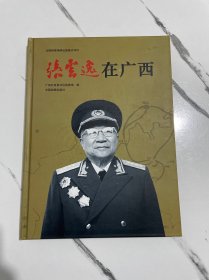
朗文英语口语和笔语语法
首页有点开胶,无划线
¥ 120 八五品
仅1件
河南周口
认证卖家担保交易快速发货售后保障
作者拜伯(Biber.D.)、陈国华 著
出版社外语教学与研究出版社
出版时间2009-05
版次2
装帧平装
货号z2
上书时间2024-07-16
- 店主推荐
- 最新上架
商品详情
- 品相描述:八五品
图书标准信息
- 作者 拜伯(Biber.D.)、陈国华 著
- 出版社 外语教学与研究出版社
- 出版时间 2009-05
- 版次 2
- ISBN 9787560020112
- 定价 119.90元
- 装帧 平装
- 开本 16开
- 纸张 其他
- 页数 1209页
- 正文语种 英语
- 原版书名 Longman Grammar of Spoken and Written English (1999)
- 丛书 当代国外语言学与应用语言学文库
- 【内容简介】
-
TheLongmanGrammarofSpokenandWrittenEnglishisanentirelynewgrammarofAmericanandBritishEnglish-fromthelanguageofconversationtothelanguageofacademictextbooks.Therearenomade-upexamplesinthisgroundbreakingnew-gramar.Theauthorsbegan.NotwithpreconceivednotionsofthegrmmarofEnglish.Butwithahugebankoflanguagedata,theLongmanCorpusNetwork.
Asix-yearresearchprojectbroughttogetherthelinguisticexpertiseofanintenationalauthorteam-allacknowledgedexpertsinthefieldofcorpuslinguisticsandgrammar.
Theresultofthisresearchisthepresentvolume.Manypointsoftraditionalgrammarareconfirmed.Butnowonthebasisofmuchlargeramountsofstatisticaldatathaneverbefore.Someaspectsoftraditionalgrammararechallengedbythisbook,andsomenewfindings.Notevensuspectedbeforenow,willsurpriseandinterestthereader.
WhatmakesthisbooksospecialisthatitturnsEnglishinsideout.ProfessorDouglasBibersresearchteamtaggedandparsedthestructuresintheCorpus.Thisanalysisrevealedthedegreetowhichdifferentgrammaticalfeaturesoflanguagevaryaccordingtothetypeoflanguage.Thewaylanguageisusedinconversationisquitedifferentfromthewaylanguageisusedinfiction,whichinturnisoftenverydifferentfromthegrammaticalcharacteristicsofnewspapersoracademicbooks.
Entirelycorpus-basedgrammarofEnglish
Over350tablesandgraphsshowingthefrequencyofconstructionsacrossdifferentregisters,fromconversationtofictiontoacademicprose
6,000authenticexamplesfromtheLongmanCorpusNetwork
BritishEnglishandAmericanEnglishgrammarcompared
Newandchallengingfindings
RevealsthedifferencesbetweenspodenandwrittenEnglish. - 【目录】
-
PrefacebyHaliday
王宗炎序
导读
Foreword
Abbreviationsandsymbols
Preface
Contents5ndatail
Symbolsandnofationalconventions
SEchIONAIntrnductory
1Imbmductkm:acorpru-basedBpproachtoEngllshgrammar
1.1introduction
1.2StructureanduseinEnglishgrammar
1.3VarietinsofEnglid,
1.4RepresentationofvadetiesIntheLSWECorpus
1.5DescriptionoftheregistercategoriesintheLSWECorpus
1.6GrammaticalanalysisoftheLSWECorpus
1.70uantitativefindings5nthegrammar
1.8Eunctiona0interetationofquantitativefindings
1.9Overviewofthegrammar
1.10PorentialusersandusesoftheLGSWE
SECTIONBtasLEgrammar:Descriptionanddistribution
2Wordandphrasegrammar
2.1Thenatureofgrammaticalunits
2.2Wordsandtheircharacteristics
2.3Surveyof0exicalwords
2.4Surveyoffunctionwords
2.5Surveyofinserts
2.6Phrasesandtheircharacteristics
2.7Typesofphrase
2.8Embeddingofphrases
2.9Coordinationofphrades
2.10Simpilecomplexphrases
3Clausegrammar
3.1Clausev.non-clausaLmatedal
3.2Majotclauseelements
3.3ClauseLinKS
3.4PedpheraLelements
3.5Majorclausepatterns
3.6Variationsondausepa~ems
3.7Ellipsis
3.8Negation
3.9subiect-verbconcord
3.10Typesofdependentclauses
3.11Finitedependentclauses
3.12Non-finiteclauses
3.13Majortypesofindependentclauses
3.14Unembeddeddependentclauses
3.15Non-clausalmaterial
SECTIONCKeywordclassesandtheirphrases
4Noum,pronouns,andthesimplenounphrase
4.1Overviewofnominalsindiscourse
4.2Thebasicstructureofnoun.headedphrases
4.3Tvpesofnouns
4.4Daterminers
4.5Number
4.6Case
4.7Gender
4.8Nounfobmation
4.9ThOroleofpronounsindiscourse
4.10Persona0pronouns
4.11Possessivepronouns
4.12Reflexivepronouns
4.13Reciprocalpronouns
4.14Demonstrativepronouns
4.15indefinitepronouns
4.16Otherpronouns
5Verbs
5.1Majorverbfunctionsandclasses
5.2Single-wordiexica0verbs
5.3Multi-wordiexica0verbs
5.4Mainandauxiliaryfunctionsofprimaryverbs
5.5Copularverbs
6VariationIntheverbphrase:tense,aspect.voice,andmodality
6.1Structureandmeaningdistinctionsintheverbphrase
6.2Tonse
6.3Aspect
6.4Activeendpassivevoice
6.5Complexcombinationsofaspectandvoice
6.6Modalsandsemi,modals
6.7Combinationsofmode0verbswithmarkedaspectorvoice
6.8Sequencesofmodalsandsemi.modals
7Adjectivesandadveri
7.1Overview
7.2Definingcharacteristicsofadjectives
7.3Semanticgroupingofadjectives
7.4Attributiveadjectives
7.5Predicativeadjectives
7.6Adjectivesinothersyntacticroles
7.7Comparativeandsuperlativedecjr~
7.8Comparativeclausesandotherdegreecomplements
7.9Formationofadjectives
7.10Adjectivesincombination
7.11Overviewofadverbs
7.12Theformofadverbs
7.13Syntacticrolesofadverbs
7.14Semanticcategoriesofadverbs
7.15Discoursechoicesfordegreeadverbsasmodifiers
SECTIONDMorecomplexstructures
8Conplexnounphrses
8.1Overview
8.2Structuraltypasofpremodification
8.3Meaningrelationsexpressedbynoun十nounsequences
8.4NounphraseswithmultiplepremodItiers
8.5Restrictivevnon.restrictivepostmodifiers
8.6Majorstructuraltypesofpostmodification
8.7Postmodificationbyfiniterelativeclause
8.8Postmodificationbynon-finiteclause
8.9Postmodificationbyprepositionalphrase
8.10POstmodificationbyappositivenounphrase
8.11Nounphraseswithmultiplepostmodifiers
8.12Nouncomplementclausesv.nomina0postmodifiers
8.13Structuraltypesofnouncomplementclause
8.14Headnounstakingnouncomplementdauses
9Theformandfunctionofcomplementclauses
9.1Overview
9.2That-clauses
9.3Wh-clauses
9.4infinitireclauses
9.5Ing-clauses
9.6Ellipsisandpro-formsubstitutioninpost.predicatecomplementclauses
9.7Choiceofcomplementclausetype
10Adverbials
10.1Overview
10.2Circumstanceadverbials
10.3Stanceadverbials
10.4Linkingadverbials
SECTIONGrammarin0widerperspectiv
11Wordorderandrelatedsyntacticchoices
11.1overview
11.2WOrdorder
11.3Thepassive
11.4Existentialthere
11.5Dislocation
11.6Clefting
11.7Syntacticchoicesinconversationv.academicprose
12Thegrammatic00markingofstance
12.1Overview
12.2Majorgrammaticaldevicesusedtoexpressstance
13.3Majorsemanticdistindionsconveyedbystancemarkers
12.4Attributionofstantetothespeakerorwdter
12.5Registerdifferencesinthemarkingofstance
13Lexlcalexpressionsinspeechandwriting
13.1Overview
13.2Lexicalbundles
13.3idiomaticphrases
13.4Freecombinationsofverb十particle
13.5Coordinatedbinomia0phrases
14Thegrammarofconversation
14.1introduction
14.2Performancephenomena:dysfluencyanderror
14.3Theconstructionalprinciplesofspokengrammar
14.4Selectedtopicsinconve~tiona0grammar
Appendix
Endnotes
Bibliography
Lexicalindex
Conceptualindex
文库索引
点击展开
点击收起
相关推荐
— 没有更多了 —






































以下为对购买帮助不大的评价